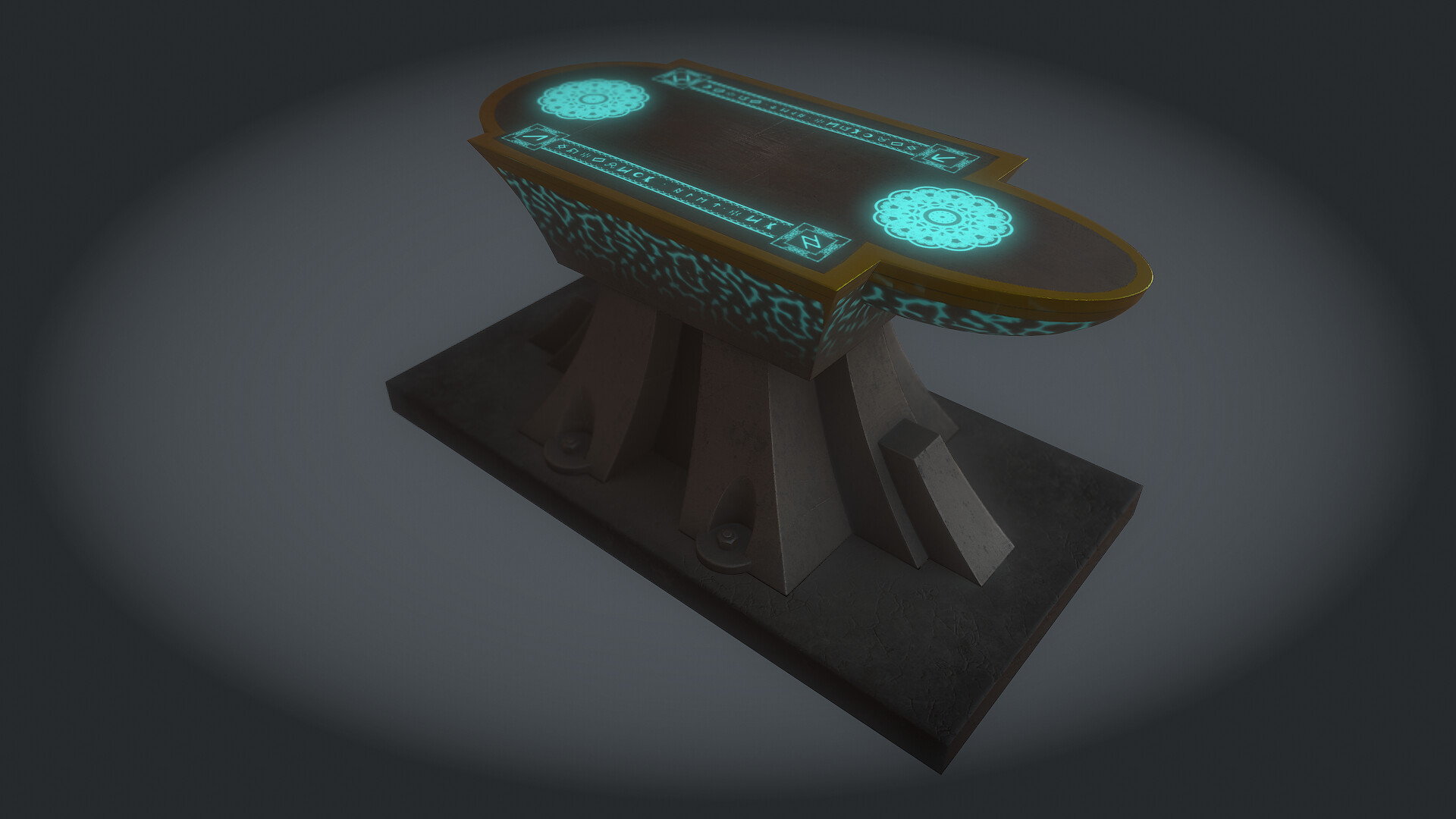

| Dragon | - | Magic Items | - | Dragon 58 |
| - | - | - | - | - |
The skill of the
dwarven folk @ Metalcraft is lejendary, and
through the ages they have continued to
find ways of improving
their abilities at smithing
work. At some Time within the last
several centuries, dwarves learned the
methods of creating a
magickal device that would make them more
skilled as armorers,
weapon makers, and smiths. The great cost
of creating a High
Anvil, however, has kept the number of
these items down to a
small scattering;
only a very large dwarven enclave can afford
to possess one of its own. High Anvils
will never be found in the
shops of dwarven armorers, weapon makers,
or smiths who are
located in cities and towns, where the
danger of theft or damage
to the anvil is too great.
The High Anvil is a large,
elaborately carved anvil forged from
an alloy of adamantite and steel. It radiates
a faint aura of
magic. The anvil weighs about 175 pounds
and cannot be easily
moved or carried; it is often fixed or
welded to the floor of the
main armory of a dwarven colony.
The workmanship involved in the forging
and decoration of a
High Anvil represents the best that the
dwarves of the clan can
offer. The anvil is frequently adorned
with depictions of great
events in the clan’s history. While dwarves
hold their High
Anvils to be beyond price, a realistic
appraisal of one’s worth
would probably range from 30,000 to 60,000
gold pieces.
When used for metalworking, the High Anvil
adds +50% to the
skill level of dwarven armorers (Dungeon
Masters Guide, p. 29),
and doubles their efficiency, effectively
halving the construction
time for any sort of metal armor.
Dwarven smiths
using a High Anvil have their efficiency
doubled in the forging of any item, and
weapon makers may
construct axes, swords, and the like at
three times the normal
rate by working them on the High Anvil.
Non-dwarven characters or creatures who
use a High Anvil (a
very rare occurrence, since dwarves are
very protective of their
treasures) will have +25% added to their
skill as an armorer but
will enjoy no other benefits.
The increases in skill level and decreases
in construction
time are not permanent for the characters
involved, and only
apply when a High Anvil is being used.
Mithril and adamantite
alloys may be worked with greater ease
on a High Anvil, and
any materials forged on a High Anvil are
certain to be of high
quality.
A High Anvil is created by a long and involved
process of
crafting and enchantment. The physical
work upon the Anvil
will take between 24 and 36 months, and
can only begin after
the members of the clan have taken 6-24
(6d4) months to
decide on the anvil’s shape, design, and
decorations. Once the
anvil has been forged, it must undergo
a ritual blessing by the
most powerful dwarven cleric in the clan,
and 4-16 (4d4) other
clerical assistants. (The main cleric must
be at least 6th level,
and must be a member of the same clan as
the dwarves who
forged the anvil.) This blessing takes
5-8 days altogether, and
the clan’s patron deity is invoked for
aid as part of the final
enchantments.
A High Anvil is not commonly found in a
treasure hoard. It
might be discovered in the ruins of a dwarven
stronghold, but
even if a clan had been destroyed or driven
off, another clan
would attempt to keep the Anvil from falling
into non-dwarven
hands. Dwarves who do manage to gain possession
of a High
Anvil (from non-dwarves, of course, since
dwarves do not steal
from each other) will gain 10,000 experience
points; the award
is half as great for non-dwarves who come
to own one.